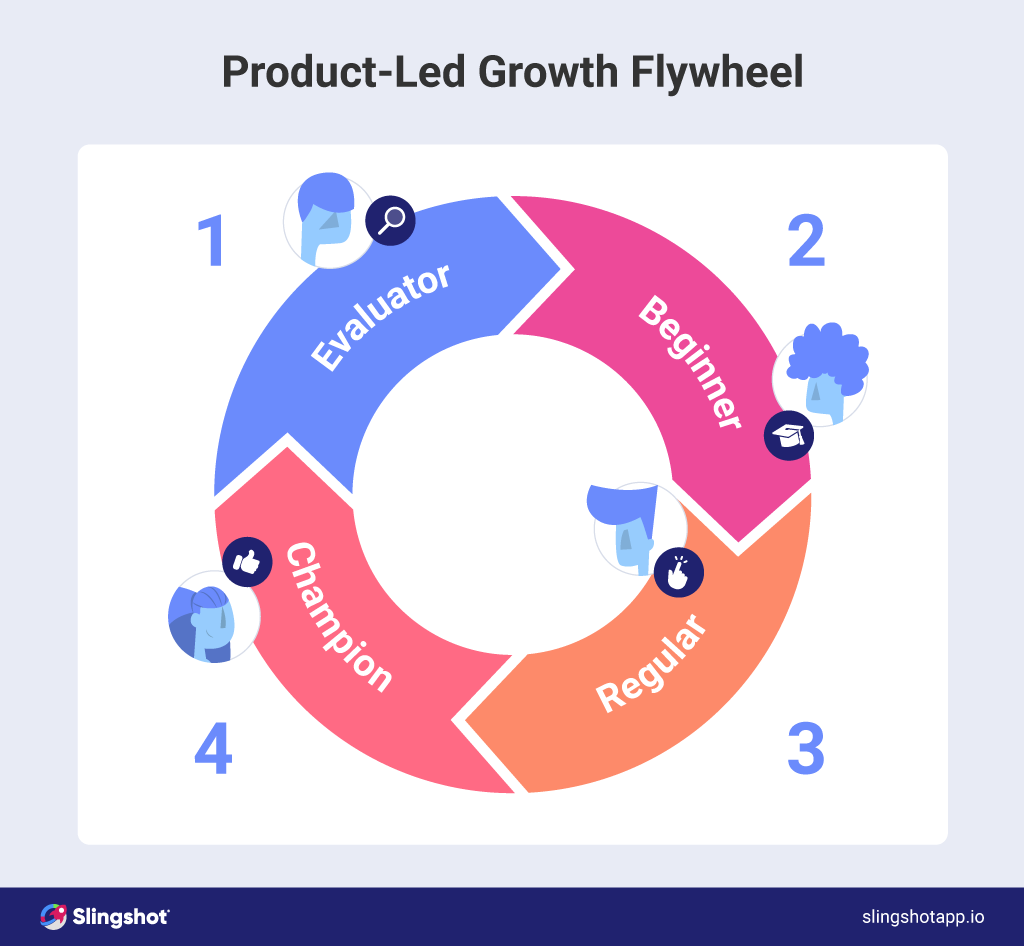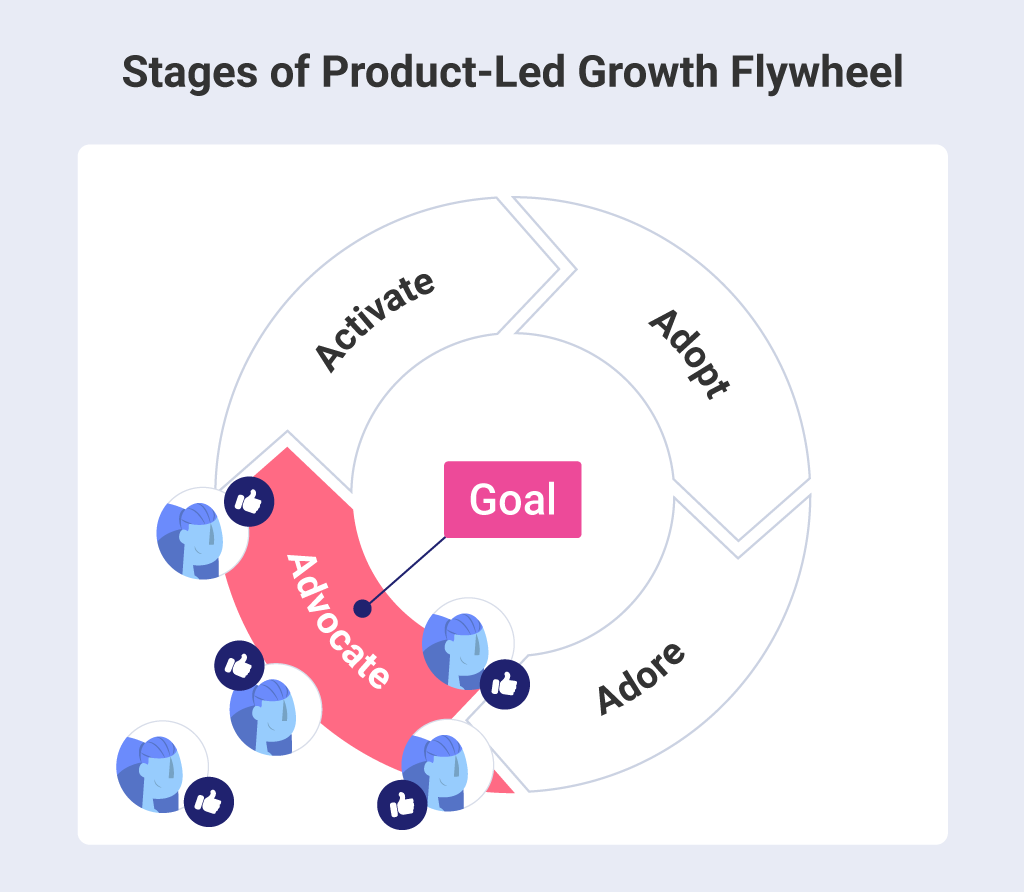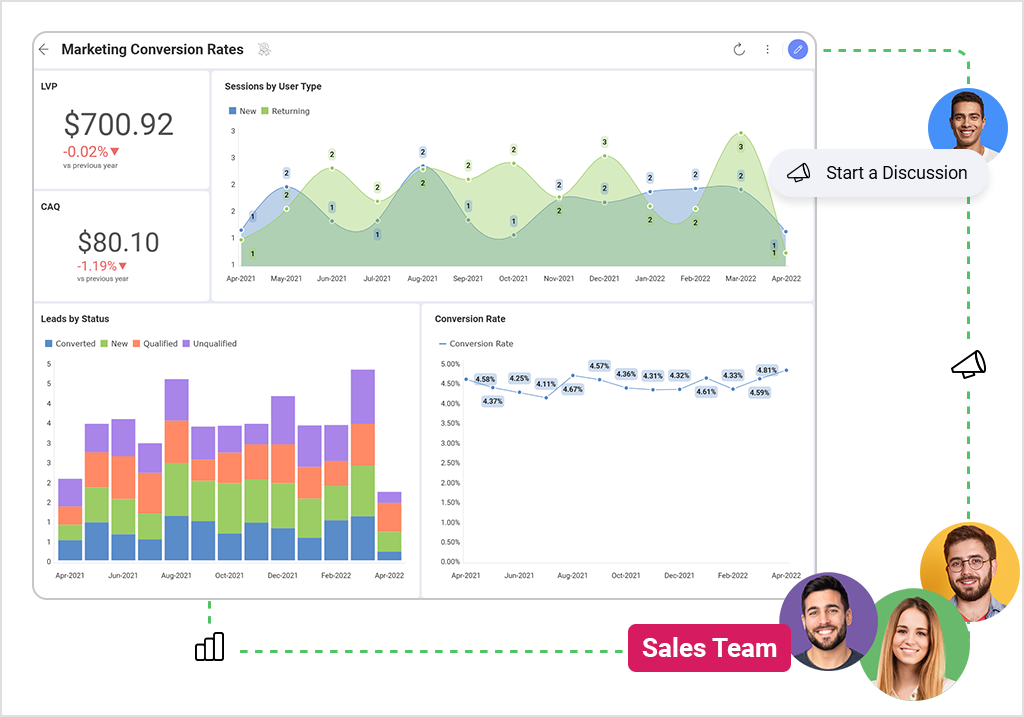
How Stephen Gould Scaled Its Capacity by 30% without Making a Single Hire
Тhe product-led growth flywheel has dethroned the well-known and loved sales funnel. But why has this happened and what does it bring to the table for businesses who want to grow and succeed? What exactly is product-led growth flywheel and how can your team implement it - fast? Read below.
Executive Summary:
Тhe product-led growth flywheel has dethroned the well-known and loved sales funnel. But why has this happened and what does it bring to the table for businesses who want to grow and succeed? What exactly is product-led growth flywheel and how can your team implement it - fast? Read below.
The sales funnel is out.
Or in part, at least.
It’s being dethroned by this new framework every company invested in its growth is running: the product-led growth flywheel.
It doesn’t matter if you’re running a big company or a small startup – increasing brand awareness, customer satisfaction, and sales are the ultimate goal.
In this blog, we’ve outlined the steps to building a product-led growth flywheel while getting to understand the method better. So, waste no more time and dig in.
The product-led growth flywheel is a framework that is used by teams in organizations that rely on product-led growth. It’s a strategy that surpasses the traditional sales and marketing funnel, changing it up from casting a wide net for conversions to focusing on the user experience as the main point at any stage of the user’s journey. The product-led growth flywheel lets the product take the wheel – because that’s what product-led growth is all about.
It’s something very popular with SaaS companies that helps marketing and sales to align, create campaigns, acquire customers, and improve visibility while converting more customers and increasing retention.

For those of you who are still not familiar with the product-led growth flywheel framework, let’s look at it in detail now.
The product-led growth flywheel framework is a method that always prioritizes the user and the main goal is to generate something called customer advocacy. To get to that, however, companies need to follow the framework, know the user segments well, and arrange the journey stages around it.
The product-led growth flywheel consists of 4 different customer user segments, namely:
“It is not your customer’s job to remember you, it is your obligation and responsibility to make sure they don’t have the chance to forget you.”
– Patricia Fripp, Professional Keynote Speaker
Each of these user segments represents four journey stages of the product-growth flywheel:
The goal of the product-led growth flywheel framework is to bring the full circle of the stages and create advocates out of the users of your product through three main actions: Attract, Engage, and Delight. This creates a positive loop that drives more acquisition and helps growth while retaining customers.

Time to take a look at some of the benefits of the product-led growth flywheel that make it so attractive for companies trying to rapidly grow.
The modern SaaS market relies on recurring revenue, so subscriptions need to constantly thrive. This could mean going for a more product-focused approach, but with the flywheel it’s much easier to prove product value and achieve user dedication, keeping customers buying and upgrading the product along the way.
Every company that relies on its product-led strategy for growth needs to improve its customer experience along the way. According to one study, 84% of companies that made effort to improve their customer experience saw revenue growth as a result. To achieve that, keep asking questions and checking in – surveys go a long way, but the product analytics and the data analysis for user behavior and experience create the clearest picture.
“We see our customers as invited guests to a party, and we are the hosts. It’s our job to make the customer experience a little bit better.”
– Jeff Bezos, Founder of Amazon
Startups grow faster after implementing the product-led growth flywheel framework. It brings better relationships with customers and helps them expand quickly. It also allows them to show their product faster, make it recognizable and align it better with their customer’s needs, leading to higher retention rates.
With a product-led growth flywheel, it’s much easier to understand your customers and develop your user segmentations better. Using behavioral segmentation helps identify your customers’ pain points better. As you then work to resolve those pain points one by one you will improve your customer experience.
Analyzing and knowing whom to target brings better focus on product-qualified leads. This exercise provides better chances of advertising to people who have already expressed interest in the product, so it saves time and lowers acquisition costs.
The process of implementing a product-led growth strategy and flywheel is not very complex, but it does require specific and intentional steps to get there. Every company deciding to implement this strategy needs to align all its teams around it.
One of the most important things is choosing the tools to equip your team with that will take your product-led growth strategy to the next level. The effectiveness of the method is impossible to achieve without them. And when you already have your tool of choice, there are two most important things to consider: analyzing the right metrics around it and helping your team collaborate perfectly in executing the strategy.
So here are a few key metrics you need to be measuring in your product-led growth flywheel.
“When a customer complains, he is doing you a special favor; he is giving you another chance to serve him to his satisfaction. You will appreciate the importance of this opportunity when you consider that the customer’s alternative option was to desert you for a competitor.”
– Seymour Fine, Author The Marketing of Ideas and Social Issues
The implementation of the product-led growth strategy for your company will happen a lot quicker if you use an all-in-one digital workplace, creating the perfect environment for collaboration, file management, and data dashboards, created and shared fast. Here’s what a tool like Slingshot can assist you with:
You can depend on Slingshot also for data-driven experiments that focus entirely on the user – by creating a seamless process with productivity flows, bringing together team collaboration, chat in context, metrics tracking, and results sharing.

You can also depend on cross-department collaboration, so sales teams, marketing teams, and product specialists can combine their skills to collaborate in one app.
SHARE THIS POST